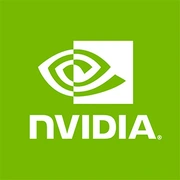NVIDIA GeForce RTX 3060

NVIDIA GeForce RTX 3060: A Deep Analysis of a Gaming and Professional Tool
Exploring the key aspects of the graphics card for gamers and professionals.
1. Ampere Architecture: NVIDIA's Technological Breakthrough
The RTX 3060 is built on the Ampere architecture, which replaces Turing. Key improvements include increased transistor density and energy efficiency thanks to Samsung's 8nm manufacturing process. This has allowed for an increase in the number of CUDA cores (3584 compared to 1920 in the RTX 2060) and improved parallel computing capabilities.
Key Features:
- RT Cores for ray tracing: Accelerate real-time lighting and shadow calculations.
- Tensor Cores for AI tasks: The foundation of DLSS (Deep Learning Super Sampling), which increases FPS without sacrificing image quality.
- NVIDIA Reflex: Reduces input lag in competitive games.
The DLSS 2.0+ technology is particularly significant: in games like Cyberpunk 2077, it boosts FPS by 40-70% while maintaining image clarity. On the other hand, AMD's FidelityFX Super Resolution (FSR) is an open alternative, but the RTX 3060 supports both standards, adding flexibility.
2. Memory: 12 GB GDDR6 for Multitasking
The RTX 3060 is equipped with 12 GB of GDDR6 memory with a 192-bit bus and a bandwidth of 360 GB/s (15 Gbps per module). This sets it apart from competitors in the segment, such as the AMD Radeon RX 6600 XT, which has 8 GB of GDDR6.
The amount of memory is critical for:
- Gaming at 1440p and 4K, where textures take up more VRAM.
- Professional tasks: Rendering complex 3D scenes or working with 4K/8K video.
However, the 192-bit bus width limits the data transfer speed compared to the RTX 3060 Ti (256-bit). This may impact performance at 4K, where high bandwidth is needed.
3. Gaming Performance: 1080p — The Ideal Choice
In tests, the RTX 3060 demonstrates stable results in Full HD (1080p) and good performance in Quad HD (1440p):
- Cyberpunk 2077 (Ultra, RTX On, DLSS Quality): 55-60 FPS at 1080p, 40-45 FPS at 1440p.
- Red Dead Redemption 2 (Ultra): 65-70 FPS at 1080p, 50-55 FPS at 1440p.
- Fortnite (Epic, DLSS): 120+ FPS at 1440p.
At 4K, the card only manages Medium-High settings (Assassin’s Creed Valhalla — ~35 FPS), but for comfortable gameplay, DLSS/FSR is needed.
Ray tracing reduces FPS by 30-40%, but DLSS compensates for the losses. Without AI upscaling, enabling RTX in AAA titles often makes gameplay less smooth.
4. Professional Tasks: Not Just Gaming
Thanks to CUDA cores and support for OptiX, the RTX 3060 is suitable for:
- 3D Rendering (Blender, Maya): In Blender Benchmark tests (bmw27), the card shows a result of ~480 seconds, close to that of the RTX 2080.
- Video Editing (Premiere Pro, DaVinci Resolve): Accelerates H.264/H.265 rendering by 30-50% compared to CPU.
- Machine Learning: Tensor Cores accelerate training for neural networks in small projects.
However, for heavy tasks (like 8K rendering), it's better to choose the RTX 3080 or professional Quadro cards.
5. Power Consumption and Cooling: Balancing Power and Silence
The TDP of the RTX 3060 is 170 W, which requires:
- A power supply of at least 550 W (600+ W recommended for systems with Ryzen 5/i5 and above).
- Quality cooling: Reference models use 2-3 fans, but custom solutions (like ASUS Dual or MSI Gaming X) are preferable for noise reduction to 32-35 dB under load.
Case Recommendation: Minimum 2-3 intake fans and 1 exhaust fan. For compact builds, 2-slot models up to 240 mm in length are suitable.
6. Comparison with Competitors: AMD vs NVIDIA
Main competitors in the $300-400 price range:
- AMD Radeon RX 6600 XT: Better in 1080p (~10-15% advantage), but weaker in 1440p and professional tasks due to 8 GB of memory.
- NVIDIA RTX 3060 Ti: 25-30% more performance, but at a higher price.
- Intel Arc A750: Cheaper, but drivers and stability are currently lacking.
The RTX 3060 wins with its 12 GB of memory, DLSS support, and better ray tracing capabilities. However, in "pure" FPS terms without RTX, the RX 6600 XT is often faster.
7. Practical Tips: How to Avoid Mistakes
- Power Supply: Don’t skimp! It's better to get a model with an 80+ Bronze rating and some power headroom (like the Corsair CX650).
- Compatibility: Ensure the motherboard has PCIe 4.0 x16 (the card is backward compatible with PCIe 3.0).
- Drivers: Use GeForce Experience for automatic updates. If there are performance issues, try rolling back to a previous version.
Important: For enabling Resizable BAR (which increases FPS by 5-10%), update your motherboard BIOS.
8. Pros and Cons of the RTX 3060
Pros:
- Optimal for 1080p/1440p.
- 12 GB of memory for future games and multitasking.
- Support for DLSS and ray tracing.
- Affordable price (starting at $330).
Cons:
- Limited performance at 4K.
- Competitors offer better FPS/price ratios in 1080p.
- Not all models have quiet cooling.
9. Final Conclusion: Who is the RTX 3060 Suitable For?
This graphics card is an ideal choice for:
- Gamers looking to play in Full HD/Quad HD with maximum settings and RTX.
- Streamers who need a balance between gaming and video encoding.
- 3D graphics enthusiasts on a limited budget.
If you are not chasing after 4K and are looking for "smart" technologies to boost FPS, the RTX 3060 remains relevant even in 2023. However, before purchasing, compare prices with the RTX 3060 Ti and RX 6700 XT: sometimes a difference of $50-100 justifies the performance gain.
Basic
Memory Specifications
Theoretical Performance
Miscellaneous
Benchmarks
Compared to Other GPU
Related GPU Comparisons
Share in social media
Or Link To Us
<a href="https://cputronic.com/gpu/nvidia-geforce-rtx-3060" target="_blank">NVIDIA GeForce RTX 3060</a>

